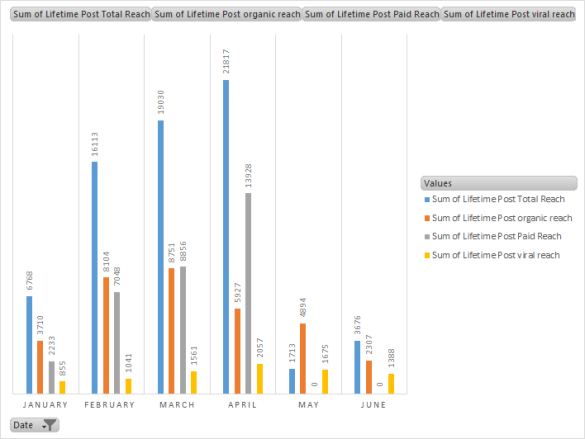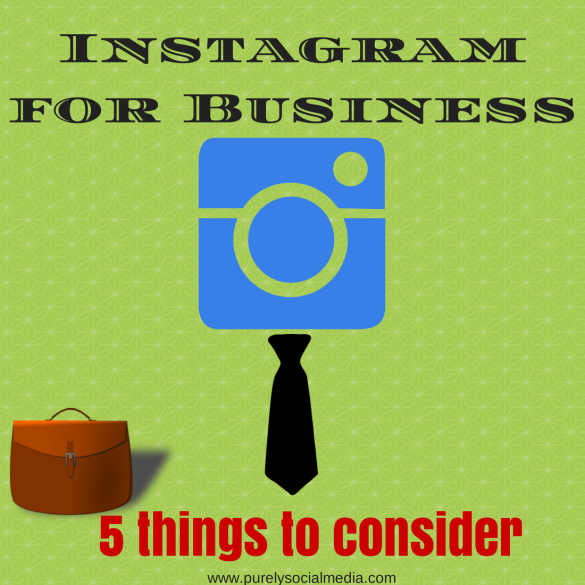So recently while working on a project a colleague of ours kept referring to this acronym K.I.S.S. (Keep it simple & sweet) and it struck a cord. We thought it wise to write a blog article on this acronym and how we believe it relates to social media.
First and foremost, time and time again we see businesses over-think and over-complicate their social media efforts. Keep in mind that social media is intended to be fun and a virtual space to engage with others, that’s it! If you make a sale or gain a new customer through social media that’s fantastic, but if that is the primary focus of your social efforts you’re going to seriously struggle. People are tired of being marketed to and they certainly don’t want you doing it on their social accounts, so when it comes to marketing your business on social media it’s best to get creative but keep it simple!
Before you even jump into the social media space you need to ask yourself a few questions. (The following questions were presented by Mark Schaefer at Social Media Success Summit 2014):
- What makes your business unique? Why do your customer’s choose to do business with you? It’s worth it to take some time to survey your current customer base and ask they what it is about your business that gets them to continue to do business with you. The value that you think you bring to your customers and they value they perceive you bring are most likely quite different.
- What is your overall company culture and can it support a social media presence? Is your business flexible enough to make the necessary and timely changes that social media often calls for?
- Are you open to listening to others, building relationships and engaging with your potential customers? To be successful on social media you need to remove your brand’s ego and be open to and genuinely interested in learning about others. Observe what is happening in your space and then dive right into the conversation. If you plan to have multiple people within your organization participate in your social media, take the time to create some guideline and rules of conduct to avoid avoidable hiccups.
- What platforms are right for you? We’ve said it before and we will say it again you do not need to be on every platform at all times. It is best to take each platform one at a time and build a strong presence. Keep in mind that not everyone is on every platform so do your homework. Where are your customers and where is your competition?
- What will be your source of rich content? This question will be simple to answer if you’ve taken the time to really answer the previous questions. Blogs, podcasts and videos are all great sources of rich content. Determine how you can enrich and enhance old and existing content. Update older blogs, convert a blog into an infographic or short video. There are lots of inexpensive and free tools available to help business owners create unique and interesting content.
- The final and most important question is “What does success on social media look like for you and your business?” It’s best to get a few of the key individuals in your organization to contribute their thoughts on this topic as well. It’s best to set goals and define success so you can know when you’ve achieved it and set new ones. Just remember that social media success takes time and patients, trial and error, so be consistent and clear with your efforts.
Action Plan
Once you’ve taken the time to answer these questions now it’s time to create a plan. This is actually the first step we take with all of our clients. Create a plan of action. The number one issue with social media is that business can begin to feel overwhelmed with content creation and posting when there is no plan in place. Once you’ve done a little investigation into your competition and have determined what your source of unique rich content will be map out your week. For example, Facebook is not a platform that requires you to post everyday multiple times a day, but Twitter, on the other hand, requires multiple posts throughout the day and a higher level of engagement.
Map out your week and be sure to include weekend posts. Even though you’re on these platforms for business purposes most of your followers and customers are there for entertainment and interactions. People are consuming content on their commutes to and from work, on their lunch breaks, in the evenings and on the weekends during their down times. Post your content to be visible when the most amount of eyes are available. If you choose to post on LinkedIn consider posting between 6:30am and 7:30am or after 6pm. Writing a blog? Research shows that Monday’s at 11am is the best time to post; however, we have found that Tuesdays and Thursdays at 11am are best for us.
Determine what type of content you will share on which days and to which platforms. Here is just a framework to help you understand and guide you in developing your own plan:
- Monday: Answer frequently asked questions
- LinkedIn 7am & Facebook 11:30am
- Tuesday: Post blog
- Google+ 12pm & Twitter 11am,12:15pm, 1pm, 4:30pm, 5:45pm, 6:30pm
- Wednesday: Share an infographic or video
- Google+ 8am & Facebook 12:30pm
- Thursday: Share a DIY or tips
- LinkedIn 6pm
- Friday: Share an aspect of your company culture or highlight the achievements of an employee
- Facebook 9am & Google+ 11:45am
Keep in mind that you do not want to post the exact same content on the same day to multiple platforms so consider having 2 categories per day or re purposing old content. Another thing you can try is creating two images and two versions on copy for the same piece on content. But no one wants to see the exact same thing you posted on Facebook on Google+ 15 minutes later. The most important thing is to have fun with it. Think of social media as your bridge between Public Relations and Marketing in real time. It allows you the opportunity to engage and communicate your brand in real time. Keep it simple, make it fun and be authentic and you’ll soon find your social media success!
If you find yourself struggling, shoot us an email. We’d be more than happy to give you a few pointers to put you in the right direction. In the meantime, share this article with fellow professionals and small business owners who you think may be interested and let us know what you think! We love chatting on Twitter or in the comments below!

















